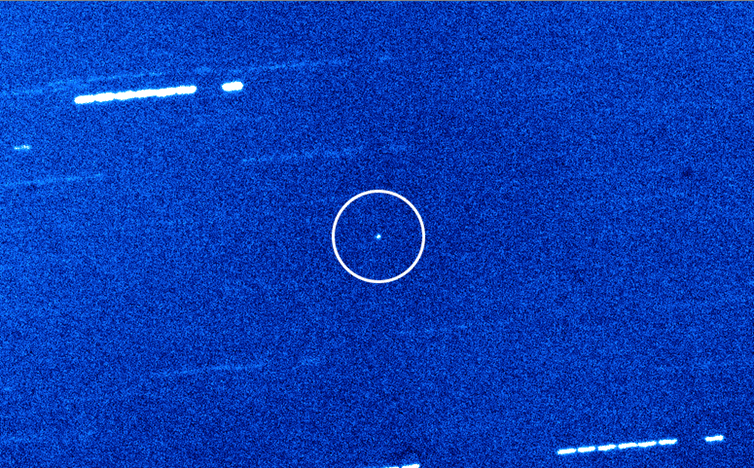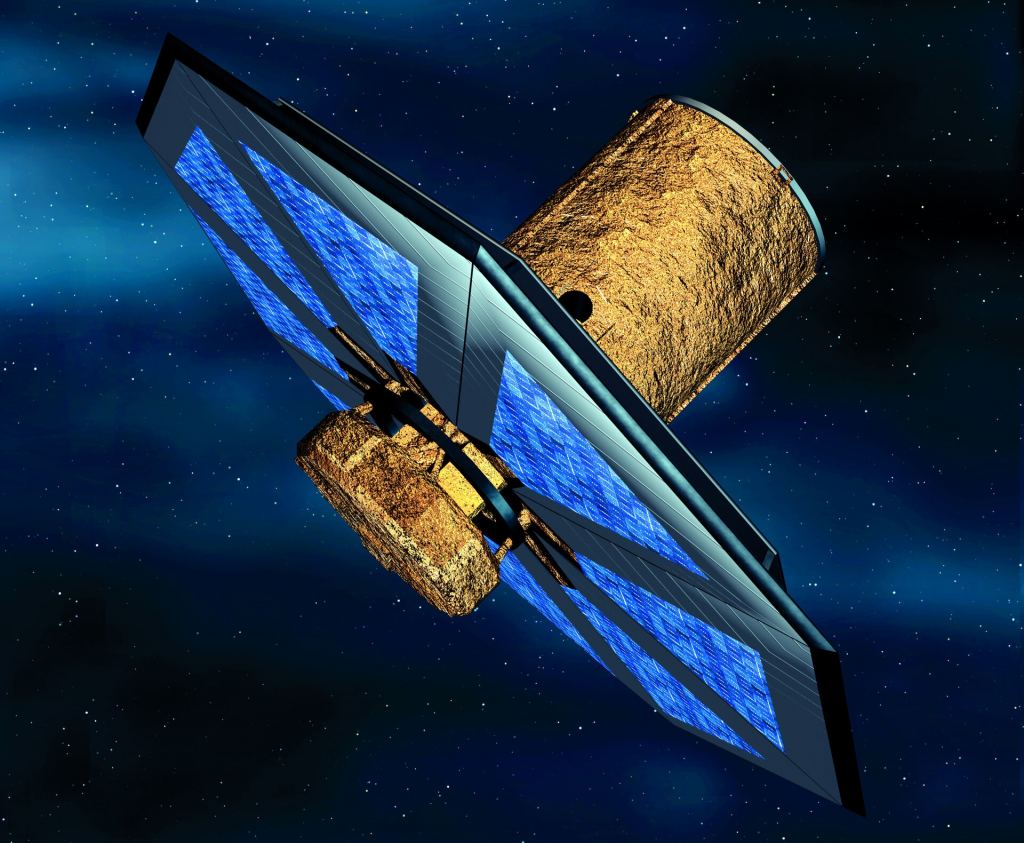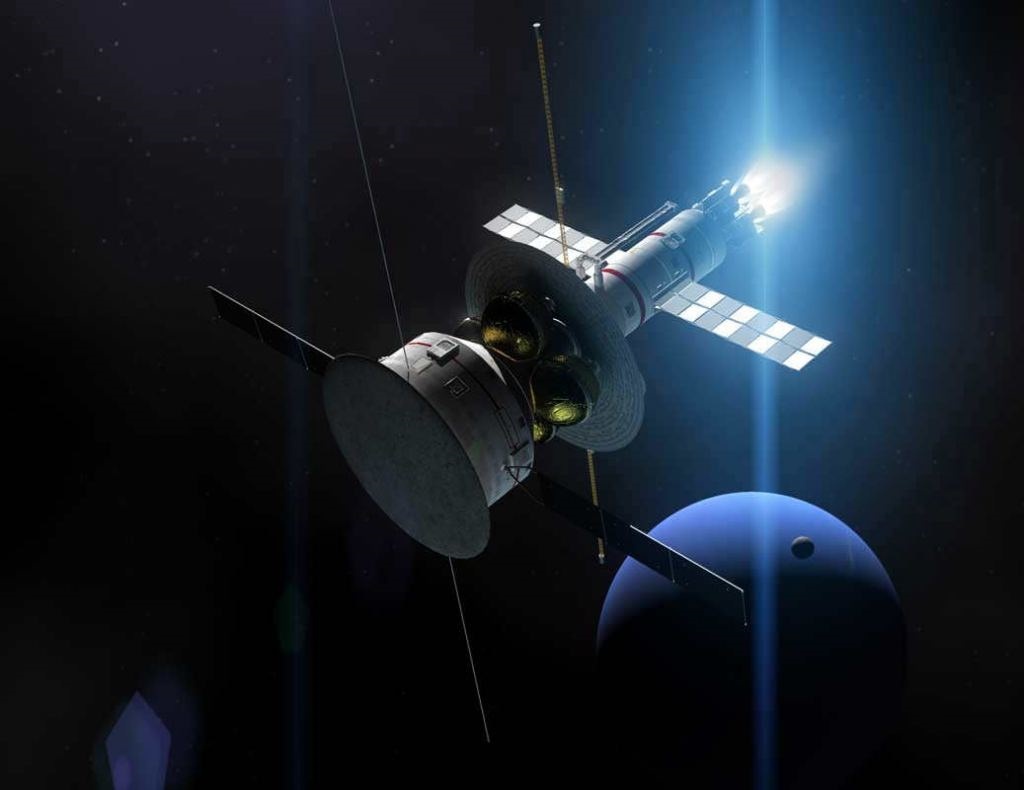Oumuamua Isn’t an Alien Probe, Because Aliens can Learn Everything They Need About us With Telescopes
By Matt Williams
In the Fall of 2017, the first known interstellar object passed through the Solar System, triggering a revolution in astronomy. Because of the amonolous nature of the object, astronomers from all over the world were at a loss to explain what it was. Neither comet, nor asteroid, nor any other conventional object appeared to fit the bill, leading to all kinds of “exotic” explanations.
A particularly exotic explanation was offered by Harvard Professor Avi Loeb and his former postdoc (Dr. Shmuel Bialy), who hypothesized that ‘Oumuamua could have been an extraterrestrial lightsail. Whereas most rebuttal papers questioned the evidence presented, a new study by astrophysicist and UCLA emeritus professor Ben Zuckerman questioned something else: why would an extraterrestrial civilization want to send a probe our way?
The study, “‘Oumuamua Is Not a Probe Sent to our Solar System by an Alien Civilization,” recently appeared online and has been submitted to the Journals of the American Astronomical Society (AAS). After reviewing the possible motivations for sending an exploratory mission, Zuckerman concludes that an ETI would have no motivation to dispatch a spacecraft to our Solar Systems (thereby casting doubt on the “alien probe” theory).

A Question of Why
To summarize his position, Zuckerman begins by acknowledging that the position paper of Loeb and Bialy contains a full 22 equations that support their argument that ‘Oumuamua was an interstellar probe. These include its mass-to-area ratio, its rotation, the maximum distance it could travel through the interstellar medium (ISM), its tensile strength, and energy-transfer as a result of impacts.
Combined with its light curve (which was consistent with a disc), its reflectivity, and the way it accelerated out of the Solar System under the influence of nothing other than solar radiation, they were able to show that ‘Oumuamua was consistent with an interstellar lightsail. In response, Zuckerman countered with a seminal quote by famed theoretical physicist Freeman Dyson:
“The problem of interstellar travel is a problem of motivation and not of physics.”
Much like Dyson’s proposal for a megastructure that could enclose an entire star system (aka. a Dyson Sphere), it’s not so much a question of whether or not you can, it’s a question of “why would you want to?” Specifically, Zuckerman cites recent research that examined the scientific viability of sending an interstellar probe to gather information on potentially-habitable planets.
Using the Cosmological Principle (aka. Copernican Principle) as a touchstone, Zuckerman considers why an alien race would be motivated to send an ‘Oumuamua-like sailcraft to nearby star systems, what the implications of this would mean, and why it seems illogical to assume they would want to given the spate of far-better options.

Inefficient Exploration
These include a recent paper titled “‘Oumuamua is not Artificial,” by physicist Jonathon Katz of the McDonnell Center for the Space Sciences at Washington University. In rebuttal to Loeb and Bialy’s paper, Katz presented arguments as to why a flyby mission would be an inefficient means for collecting data. This applies to both ‘Oumuamua and Breakthrough Starshot‘s proposal for an interstellar lightsail mission.
According to Katz’s calculations, at a rate of 26 km/s, it would have taken ‘Oumuamua about 400,000 years to travel from any main-sequence star system within 32.6 light-years (10 parsecs). According to Zuckerman, this means that a technologically-advanced species would need to be much older by now and developed far more advanced means of probing the depths of space (making such a probe inefficient).
What’s more, he estimates that in order for such a probe to show up in our Solar System (barring exceptional luck), a species would have to launch 100,000 such probes (also a very inefficient approach). Interestingly, this aspect of Zuckerman’s rebuttal paper represents something of a flipside to a point made by Loeb and Bialy in their original paper, which cites previous research on the number of interstellar objects (ISOs) in nearby space.
According to a 2018 study titled “Interstellar Interlopers: Number Density and Origin of ‘Oumuamua-like Objects,” researchers from the Institute for Astronomy at the University of Hawaii showed that there would need to be 2 quadrillion ISOs within every cubic parsec (~35 cubic light-years) – or 1 quadrillion objects ejected per star system – in order for objects like ‘Oumuamua to be detectable.

Turning this argument on its head, Zuckerman posits that the presence of an artificial object in our Solar System implies the existence of many, MANY more. The alternative, much as Loeb argues, is that the detection of such an object was extremely lucky (and extremely unlikely).
Super Telescopes
In contrast, says Zuckerman, a technologically-advanced species be hard-pressed not to recognize the vastly-superior scientific returns offered by sophisticated telescopes – using NASA’s Terrestrial Planet Finder (TPF) and the ESA’s Darwin as examples. The TPF was a proposal for a constellation of high-sensitivity space telescopes that was previously under consideration by NASA’s Astronomy and Astrophysics Survey Committee.
Darwin, meanwhile, was a proposed a constellation of four or five free-flying spacecraft designed to search for Earth-like planets around other stars and analyze their atmospheres. While neither concept was realized (the TPF was passed over in favor of the James Webb Space Telescope), the principle remains the same. Based on the scientific returns that next-generation telescopes will yield, Zuckerman concludes the following:
“Should a nearby technological civilization actually exist… its giant space telescopes would completely vitiate any motivation for construction of the type of directed probe that ‘Oumuamua represents in the Bialy & Loeb (2018) picture. Earth-based telescopes have played an absolutely essential role in our exploration of our Solar System by spacecraft.”

Exploration Goals
Another insight Zuckerman offers is the deep connection that exists between telescopic surveys and interstellar probes. In this, he expands on an argument he made in a 1981 study where he argued that space telescopes in interplanetary space could survey exoplanet atmospheres (a prescient observation), reduce the cost of uncrewed interstellar missions, and even assist in directed panspermia efforts.
“NASA’s Perseverance is only the most recent of a string of spacecraft sent to explore Mars, rather than, say, Mercury or Venus; this is because our telescopes have long provided ample motivation to go to Mars above all other planets,” Zuckerman argues in this recent paper. “Similar considerations, but for space-based telescopes, hold for exploration of extrasolar planets.”
Last, but not least, Zuckerman compares the capabilities of existing space telescopes to what could realistically be expected aboard a spacecraft that was the size and profile of ‘Oumuamua. On top of that, the scientific motivations for space telescopes are also entirely clear, whereas interstellar mission concepts are fraught with all kinds of questions concerning validity and cost-effectiveness. In summary:
“The fleeting capabilities of any such flyby probe are vastly inferior to the power of space telescopes operational for eons of time in the interplanetary space of the alien civilization. Although it has proven difficult for astronomers to construct a compelling picture of ‘Oumuamua based on conventional astronomical objects, the discussion in the present paper demonstrates the logical impossibility of an explanation that involves flybys of alien probes.”

Cosmological Counterpunch
Of course, several counter-arguments can be made. For starters, Zuckerman uses the velocity of ‘Oumuamua to argue that it is a wholely inefficient way to explore space. However, this point is easily-countered by the example Project Dragonfly, another proposed lightsail craft currently being developed that includes a magnetic sail to slow down after crossing interstellar space.
In short, just because ‘Oumuamua was traveling at a velocity of 25 km/s when it was detected does not mean it was traveling the entire time it was in transit. Zuckerman also argues that an ETI would need to produce light sails on the order of 105 for one of them to have a chance of being detected. However, the Cosmological Principle can be brought back around on this point to additional implications.
If we assume one ETI is capable of investigating the concept of interstellar lightsails and considering them to be worthwhile, it is hardly unusual to assume more than one in our corner of the galaxy would consider doing the same over time. What’s more, Zuckerman’s paper assumes that an ‘Oumuamua-like object would be operational, or that the species that sent it would still be living.
This is a question that Leob addressed in his 2018 paper with Bialy and subsequently in his book Extraterrestrial: The First Sign of Intelligent Life Beyond Earth. In both instances, Prof. Loeb suggests the very real possibility that if ‘Oumuamua was artificial in origin, that it may have been a piece of space debris or the remains of a now-defunct spacecraft. By extension, whoever sent it out could be long-dead, and the mission long over.

Alas, Zuckerman has a very solid point when it comes to the question of motivations and cost-benefit analysis. When it comes right down to it, interstellar exploration requires a tremendous amount of energy and resources. There’s also how long such a mission would take to reach its destination and the time-lag imposed on communications. For this reason, it’s understandable why scientists would consider stay-at-home missions that cost less and can promise scientific returns far soon. In short, “why bother?”
However, this raises another all-important counter-argument. If relying on next-generation telescopes is sufficient motivation not to be mounting an interstellar mission, then why is humanity attempting to realize such missions even as we speak? Ever since the dawn of the Space Age, there have been scientists dedicated to the pursuit of developing concepts for interstellar exploration.
More modern examples (as noted already) include Breakthrough Starshot, which is overseen by a Board of Directors chaired by Prof. Loeb himself. This non-profit enterprise was launched by Yuri Milner, Stephen Hawking, and Mark Zuckerberg in 2016 for the purpose of realizing an interstellar mission that could travel to Alpha Centauri and observe any exoplanets there within our lifetimes.
There’s also the aforementioned Project Dragonfly, which emerged as part of a 2013 design competition that was hosted by the Initiative for Interstellar Studies (i4is). Coincidentally, whereas Dragonfly was the winning concept at the competition, the design that took home the second-place prize was the one Breakthrough Starshot eventually adopted for development.

There’s also Icarus Interstellar, an international non-profit dedicated to the realization of interstellar exploration through education, and outreach. This organization also oversees the development of a number of advanced concepts, which include Project Icarus, Project Persephone, Project Bifrost, Project Forward (another lightsail concept), and Project Hyperion (which is being developed in collaboration with i4is).
Alongside other proposals like the British Interplanetary Society’s Project Daedalus, the Enzmann Starship, and the 100 Year Starship, there is simply no shortage of scientists and dreamers who want to pursue interstellar exploration. This is in spite of the fact that next-generation telescopes will be operational in just a few years that promise to probe the deepest mysteries of the Universe.
With everything from objects in our Solar System and nearby exoplanets to the earliest galaxies in the Universe up for observation, why would we bother sending a spacecraft to nearby stars to take inferior pictures of them? Good question! Then again, why was it necessary to send astronauts to the Moon when we were perfectly capable of examining it from afar?
An obvious answer would be the opportunity to procure samples of lunar rock for analysis (which are still yielding scientific data to this day). The same is true for sending robotic missions and astronauts to Mars. The Perseverance rover is not only the first mission that will allow for a sample-return from Mars but will pave the way for crewed missions (which will also transport Martian samples home).

However, a much more obvious reason is that going to the Moon in person was so much more meaningful. In this sense, we can see how the question of motivation goes far beyond the tangible benefits. When it came right down to it, the greatest impact of the Apollo Era was the sense of pride and accomplishment it brought all human beings. And the greatest reason for going in the first place was summarized years in advance:
We choose to go to the Moon! We choose to go to the Moon in this decade and do the other things, not because they are easy, but because they are hard; because that goal will serve to organize and measure the best of our energies and skills, because that challenge is one that we are willing to accept, one we are unwilling to postpone, and one we intend to win…”
Hard to argue with that of impassioned logic, isn’t it? If we assume that the Cosmological Principle applies in all of these cases, then we have to assume that ETIs have agonized over the exact same considerations we are now, and perhaps came to similar conclusions. “Why send a probe (or thousands of probes) to explore other planets for signs of life? Because they’re there, dangit!”
Further Reading: arXiv
The post Oumuamua Isn’t an Alien Probe, Because Aliens can Learn Everything They Need About us With Telescopes appeared first on Universe Today.

March 19, 2021 at 06:39AM
via Universe Today read more...

Post a Comment